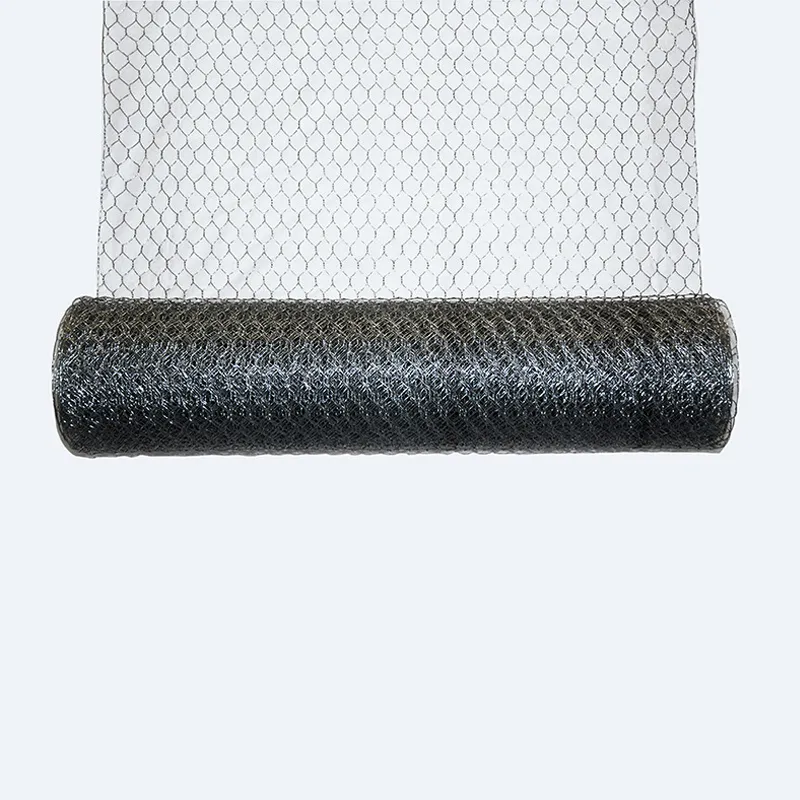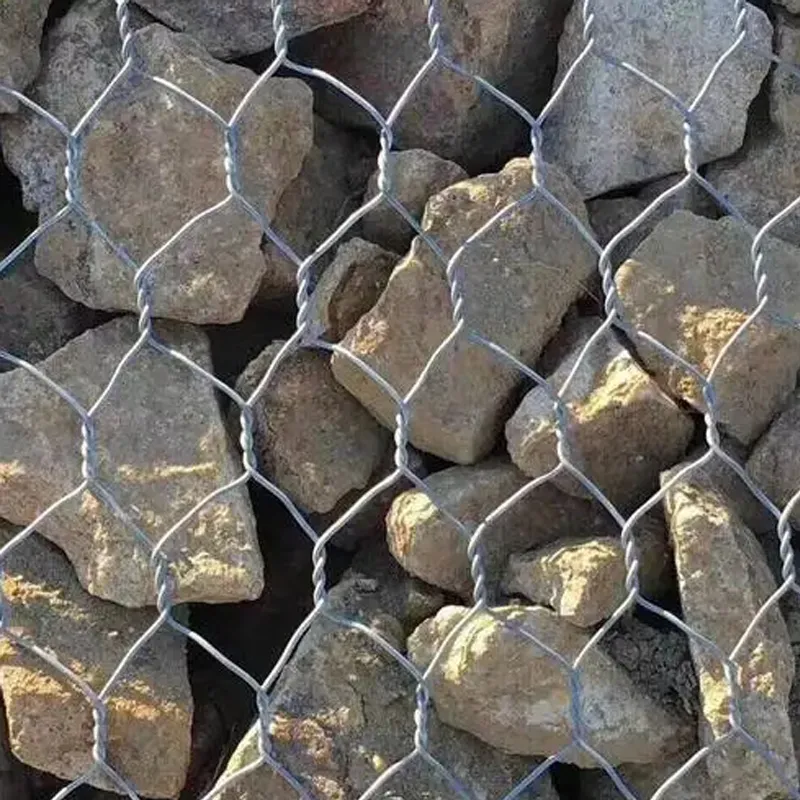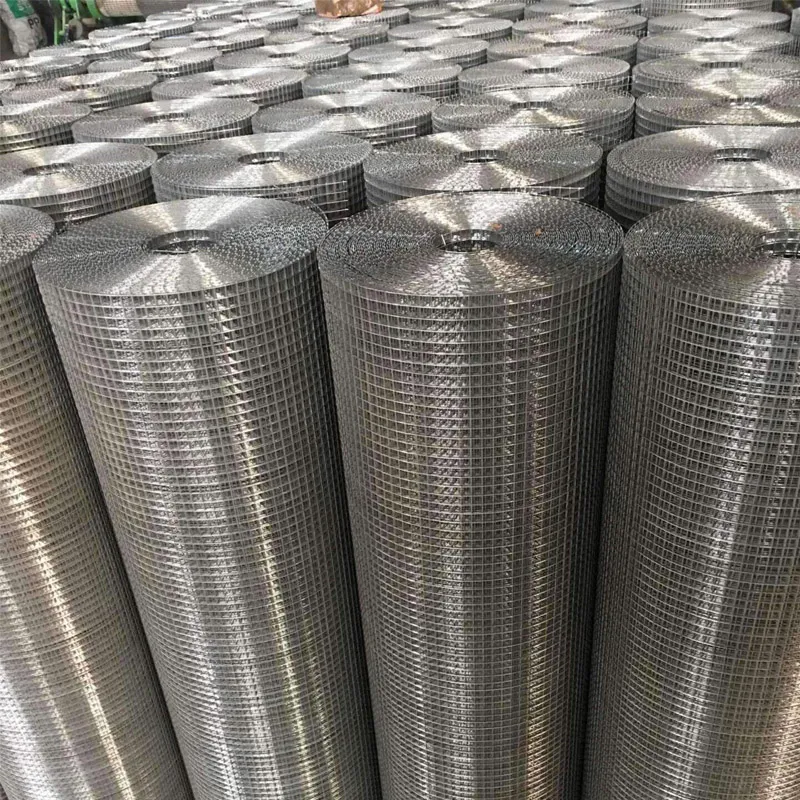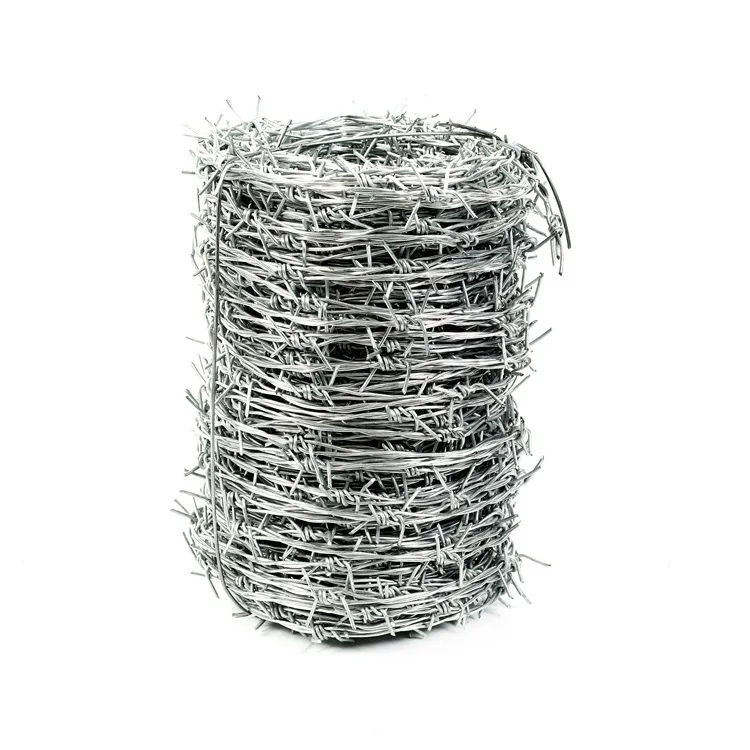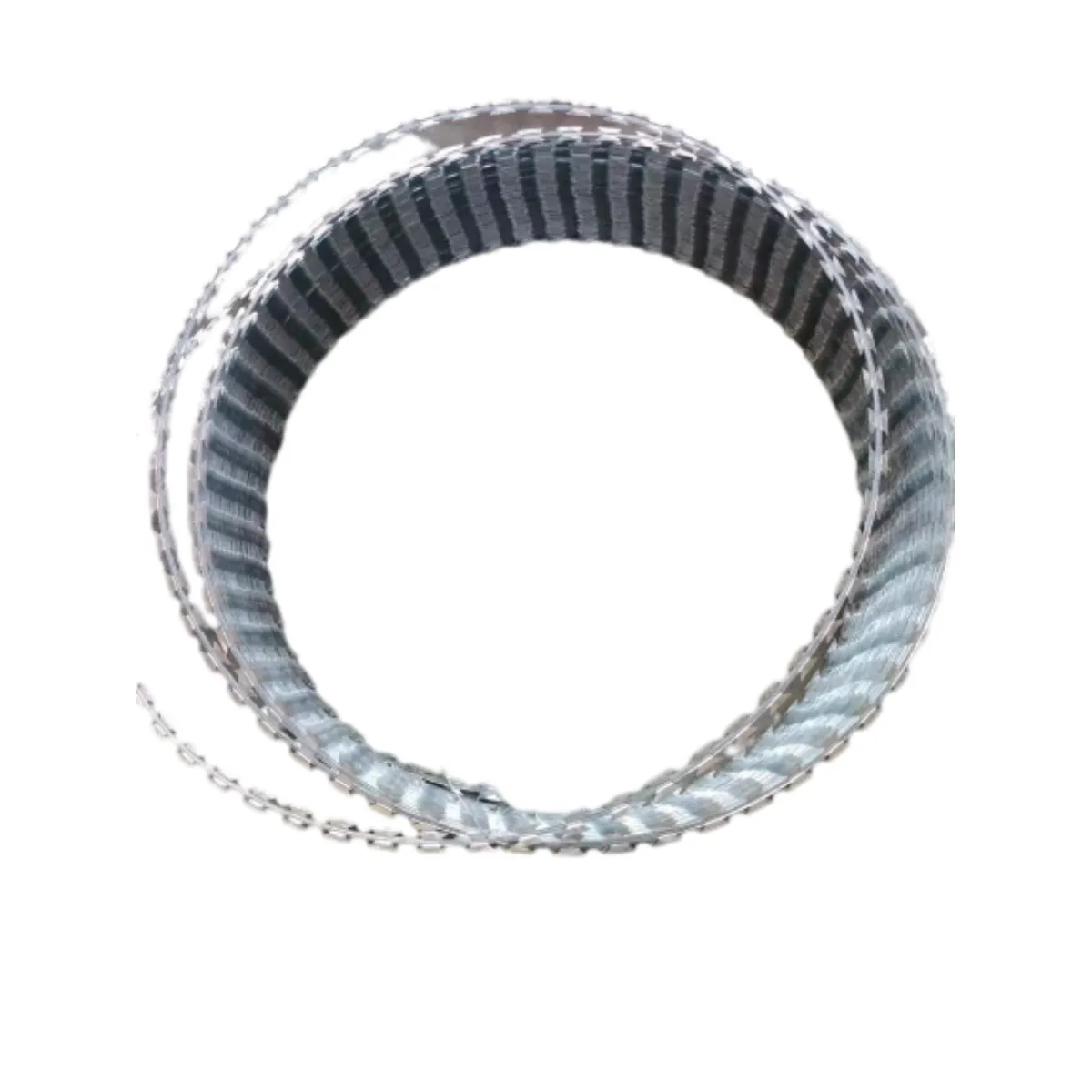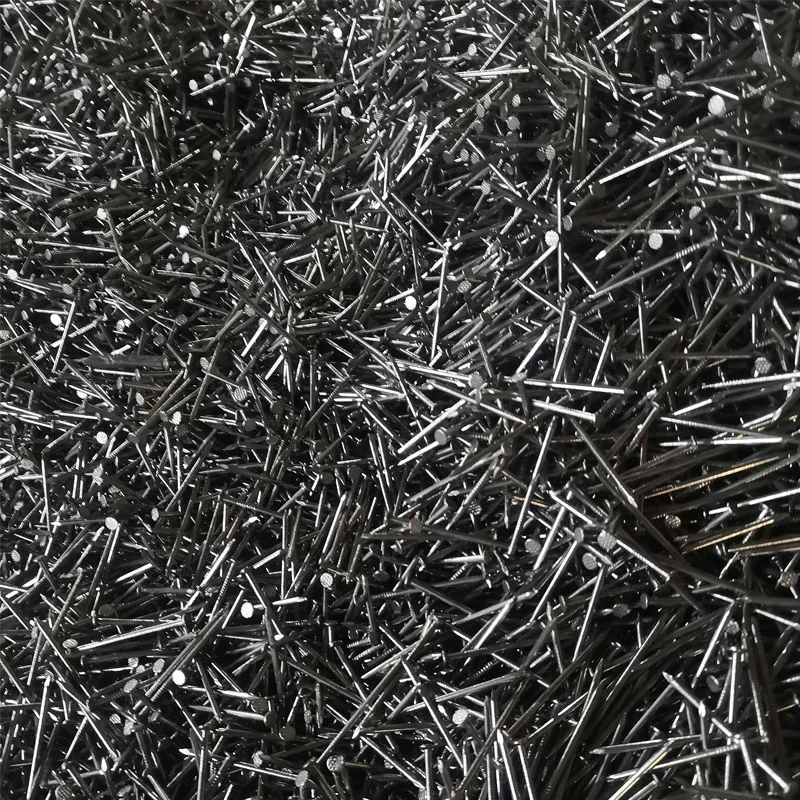Sep . 01, 2025 04:20 Back to list
Galvanized Welded Wire Mesh Manufacturers | Durable & Rust-Resistant
Navigating the Landscape of Galvanized Welded Wire Mesh Manufacturers
The industrial landscape relies heavily on robust and reliable materials for infrastructure, security, and various operational applications. Among these, galvanized welded wire mesh stands out as a fundamental component, valued for its strength, durability, and corrosion resistance. As a leading material in countless sectors, understanding the capabilities and processes of top galvanized welded wire mesh manufacturers is crucial for sourcing optimal solutions.
This comprehensive guide delves into the specifics of galvanized welded wire mesh, exploring its manufacturing intricacies, technical specifications, diverse applications, and the strategic considerations for procurement from expert suppliers. We aim to provide B2B decision-makers and engineers with the insights necessary to make informed choices, ensuring long-term performance and cost-efficiency for their projects.
Industry Trends and Market Dynamics for Galvanized Wire Mesh
The global market for galvanized welded wire mesh is experiencing steady growth, driven by an accelerating pace of industrialization, urbanization, and infrastructure development worldwide. Key trends shaping this market include:
- Infrastructure Boom: Massive investments in roads, bridges, public utilities, and commercial structures globally demand vast quantities of durable construction materials, including those from leading manufacturers for reinforcement, fencing, and safety barriers.
- Heightened Security Demands: Rising global security concerns are fueling demand for robust perimeter fencing and security cages, for which galvanized wire mesh offers an ideal combination of strength and anti-corrosion properties.
- Agricultural Expansion: The need for efficient livestock enclosures, crop protection, and horticultural supports drives consistent demand for galvanized wire mesh for sale, particularly in developing economies.
- Technological Advancements in Manufacturing: Automation in welding processes, advancements in galvanizing techniques (e.g., improved adhesion, thicker coatings), and the development of specialized alloys enhance product quality, consistency, and extend service life.
- Focus on Sustainability: While not traditionally "green," the longevity and recyclability of galvanized steel contribute to sustainable construction practices by reducing the frequency of replacement and minimizing waste. Manufacturers are also exploring more energy-efficient galvanizing processes.
- Customization and Specialty Products: There's a growing demand for customized mesh panels to meet specific project requirements, leading manufacturers to invest in flexible production capabilities for various mesh sizes, wire gauges, and panel dimensions.
These trends underscore the critical role of galvanized welded wire mesh in modern industrial and societal development, emphasizing the importance of selecting a manufacturer capable of delivering high-quality, compliant products.
The Manufacturing Process: Precision and Protection
The production of galvanized welded wire mesh involves a sophisticated, multi-stage process designed to ensure structural integrity and exceptional corrosion resistance. Reputable galvanized welded wire mesh manufacturers adhere to stringent quality control at each step.
Core Materials:
The foundation of high-quality galvanized welded wire mesh begins with selecting premium low-carbon steel wire. This material offers an excellent balance of strength, ductility, and weldability, crucial for forming the mesh structure and accepting the galvanization coating effectively. Wire diameters typically range from 0.4mm to 6.0mm, depending on the required application and strength specifications.
Manufacturing Process Flow:
- 1. Wire Drawing: High-carbon steel wire rods are drawn through a series of dies to achieve the desired wire gauge (diameter). This process enhances the tensile strength and surface finish of the wire.
- 2. Wire Straightening & Cutting: The drawn wire is then straightened and cut to precise lengths for the warp (longitudinal) wires and the weft (transverse) wires, according to the specified mesh panel dimensions.
-
3. Welding: The pre-cut wires are arranged in a grid pattern. A specialized automatic welding machine uses resistance spot welding to fuse the intersecting wires at each joint. This creates a strong, uniform mesh structure with consistent aperture sizes. The accuracy of this step is paramount for structural integrity.
Schematic Step:
[Wire A] --- [Weld Point] --- [Wire A]
| |
[Wire B] --- [Weld Point] --- [Wire B]
- 4. Surface Preparation (Cleaning & Pickling): Before galvanizing, the welded mesh panels undergo thorough cleaning. This typically involves degreasing to remove oils and dirt, followed by acid pickling to remove rust and mill scale. A clean surface is essential for optimal zinc adhesion.
- 5. Fluxing: After pickling, the mesh is dipped into a flux solution (e.g., zinc ammonium chloride). This prepares the steel surface for reaction with the molten zinc and prevents oxidation prior to immersion.
-
6. Hot-Dip Galvanizing: The cleaned and fluxed mesh panels are immersed in a bath of molten zinc at approximately 450°C (840°F). The iron in the steel reacts with the molten zinc to form a series of zinc-iron alloy layers, which are then covered by a pure zinc outer layer. This metallurgical bond provides exceptional corrosion protection.
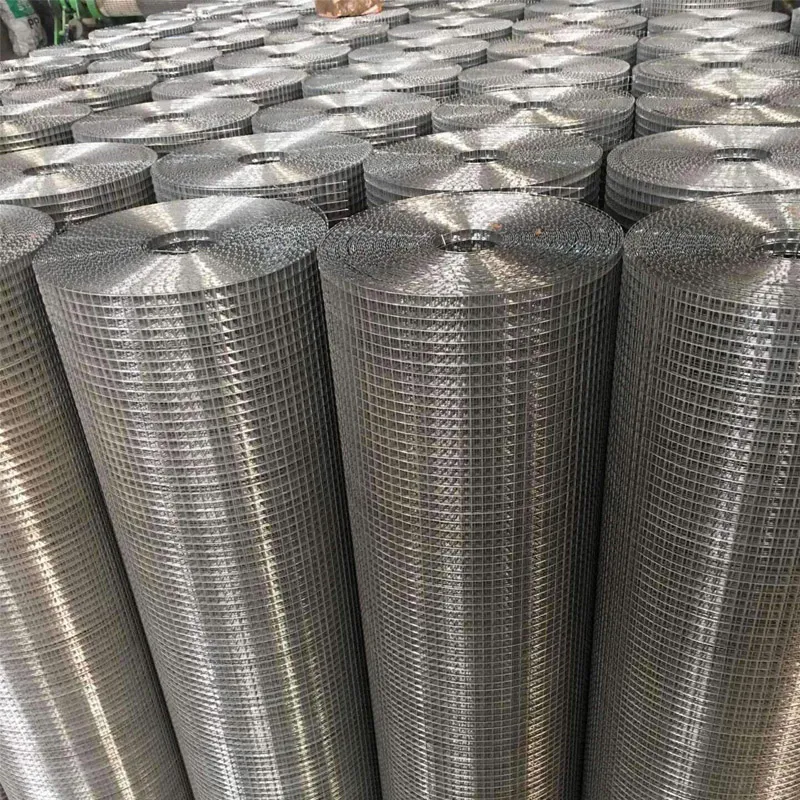
Image 1: Hot-dip galvanizing process for wire mesh panels.
- 7. Cooling & Finishing: After withdrawal from the zinc bath, the mesh is cooled, often in water, to solidify the coating. Excess zinc is removed, and the mesh is inspected for uniformity and coating thickness.
- 8. Quality Control & Testing: Throughout the process, rigorous testing ensures adherence to international standards such as ISO 9001 for quality management, ASTM A123/A123M for zinc coating specifications, and ASTM A740 for structural integrity of welded wire fabric. Tests include zinc coating thickness measurement, adhesion tests, tensile strength tests, and visual inspection for defects.
- 9. Packaging: Finished galvanised steel mesh panels are typically bundled, rolled, or palletized for safe transport and storage, often with protective wrapping.
This meticulous process ensures that the final product offers not only mechanical strength but also an extended service life in challenging environments, often exceeding 20-50 years depending on the environmental conditions and coating thickness.
Technical Specifications and Performance Parameters
Understanding the technical specifications of galvanized welded wire mesh is paramount for ensuring its suitability for a given application. Key parameters dictate performance, durability, and compliance with industry standards.
Critical Parameters:
- Mesh Aperture (Opening Size): The distance between adjacent parallel wires, typically square or rectangular. Common sizes range from 6x6mm up to 100x100mm.
- Wire Gauge (Diameter): The thickness of the steel wire used, measured in millimeters or BWG (Birmingham Wire Gauge). Thicker wires provide greater strength and rigidity. Typical range: 0.4mm to 6.0mm.
- Panel Dimensions: Length and width of the mesh panels or rolls. Standard rolls can be 30m long, while panels vary widely for specific uses.
- Zinc Coating Thickness: The amount of zinc applied to the steel surface, measured in microns (µm) or grams per square meter (g/m²). Hot-dip galvanization typically yields thicker coatings (e.g., 40-80 µm, or 275-600 g/m²) compared to electro-galvanization, directly impacting corrosion resistance and service life.
- Tensile Strength: The maximum stress the wire can withstand while being stretched or pulled before breaking, critical for structural and security applications. Typically measured in MPa.
- Weld Shear Strength: The force required to separate the welded joints, a direct indicator of the mesh’s structural integrity.
Typical Product Specification Table:
| Parameter | Description | Typical Range/Value | Relevant Standard |
|---|---|---|---|
| Mesh Opening | Square or Rectangular | 6.35mm to 101.6mm (1/4" to 4") | ASTM A185/A497 |
| Wire Diameter | Gauge of wire (SWG/BWG/mm) | 0.4mm to 6.0mm (27 BWG to 8 BWG) | ASTM A82 |
| Panel/Roll Width | Width of mesh product | 0.5m to 2.5m | Manufacturer Specific |
| Panel/Roll Length | Length of mesh product | 1m to 50m (Rolls up to 300m) | Manufacturer Specific |
| Zinc Coating Weight | Grams per square meter (g/m²) | 40 g/m² to 600 g/m² (Hot-dip) | ASTM A123/A123M, EN ISO 1461 |
| Tensile Strength | Ultimate strength of wire | 450-650 MPa | ASTM A853 |
| Weld Shear Strength | Force required to break welds | Min. 35% of wire ultimate strength | ASTM A185 |
These detailed specifications enable engineers and procurement specialists to precisely match product characteristics with the demands of their intended applications, ensuring optimal performance and compliance.
Diverse Application Scenarios and Target Industries
The versatility and inherent advantages of galvanized welded wire mesh make it indispensable across a broad spectrum of industries. Its robust nature and corrosion resistance are particularly valued in environments where durability and minimal maintenance are critical.
Key Application Areas:
- Petrochemical Industry: Used extensively for safety barriers, machinery guards, protective enclosures around hazardous equipment, filtration supports, and elevated walkway grates. The exceptional corrosion resistance of galvanized mesh protects against chemical exposure and harsh atmospheric conditions, enhancing safety and operational longevity.
- Metallurgy & Mining: Applied in various screening and filtering processes for raw materials, protective linings in mining shafts, and robust fencing for secure facility perimeters. Its high tensile strength withstands abrasive conditions and heavy loads.
- Water Supply & Drainage Systems: Utilized for coarse filtration, debris screens in water intake systems, trench covers, and stormwater grates. The galvanized coating prevents rust and degradation in constantly wet or submerged environments, ensuring long-term functionality and reducing maintenance overheads.
- Agriculture & Animal Husbandry: The primary choice for animal enclosures (cages, kennels, runs), farm fencing, crop protection, and trellises. Its durability and non-toxic zinc coating make it safe and effective for livestock containment and agricultural applications. This is where demand for galvanized wire mesh for sale is consistently strong.
- Construction & Infrastructure: Employed as concrete reinforcement mesh, security fencing for construction sites, perimeter security, gabion basket mesh for erosion control, and safety barriers. The rigidity of galvanised steel mesh panels contributes significantly to structural integrity and site safety.
- Logistics & Storage: Used in warehouse racking, pallet mesh, and security cages for valuable goods, offering visibility while maintaining strong protective barriers.
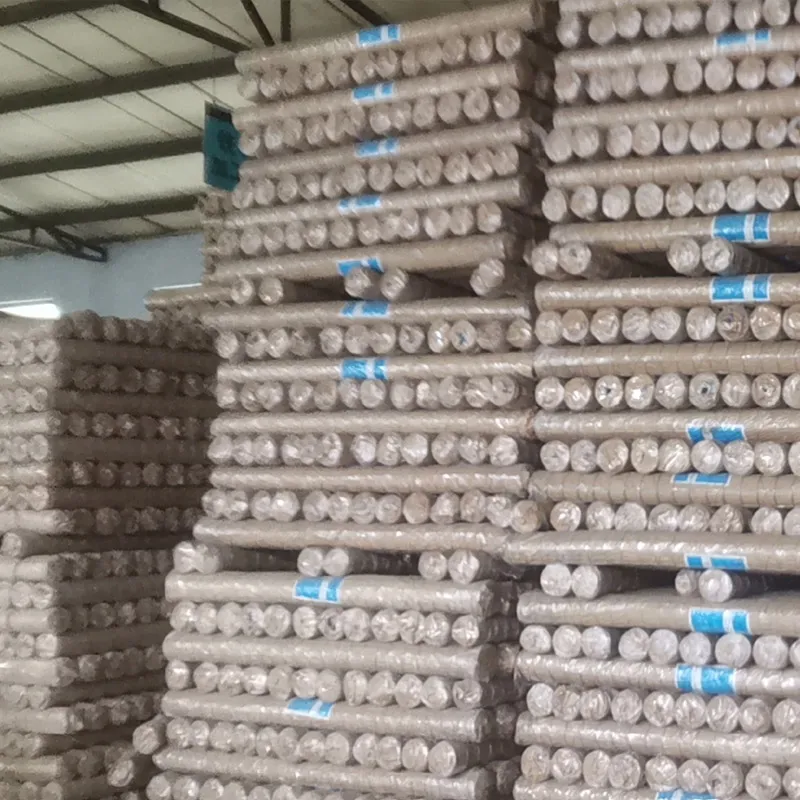
Image 2: Galvanized welded wire mesh in an industrial fencing application.
In each of these scenarios, the primary advantage lies in the mesh's ability to resist corrosion over extended periods, especially in humid, acidic, or outdoor environments, drastically reducing maintenance costs and ensuring long-term structural integrity. This translates into significant lifecycle cost efficiency for projects.
Technical Advantages of Galvanized Welded Wire Mesh
The widespread adoption of galvanized welded wire mesh is directly attributable to its intrinsic technical advantages, which provide superior performance and value compared to untreated or other mesh types.
- Exceptional Corrosion Resistance: The hot-dip galvanizing process creates a metallurgical bond between the steel and the zinc coating, forming a barrier that effectively shields the steel from corrosive elements. Zinc also offers cathodic protection, meaning if the coating is scratched, the surrounding zinc will sacrificially corrode before the underlying steel, protecting the integrity of the mesh. This is critical for outdoor, marine, or industrial environments.
- High Strength and Rigidity: The welding process ensures that each intersection point is securely fused, providing high structural rigidity and preventing individual wires from shifting or coming loose. This makes it ideal for load-bearing applications, security fencing, and reinforcement.
- Extended Service Life: Due to its superior corrosion protection, galvanized welded wire mesh boasts a significantly longer service life than uncoated steel mesh, often lasting for decades with minimal maintenance, even in harsh conditions. This translates to reduced replacement costs and downtime.
- Uniform Mesh Structure: Automated welding machines produce a consistent and precise mesh pattern, ensuring uniform aperture sizes and overall panel dimensions. This consistency is vital for applications requiring specific filtration, screening, or aesthetic requirements.
- Versatility and Ease of Fabrication: Galvanized mesh can be easily cut, bent, and formed into various shapes to suit specific project needs without compromising its structural integrity or protective coating significantly. It is available in rolls or flat panels, offering flexibility in installation.
- Cost-Effectiveness Over Lifecycle: While initial costs might be slightly higher than non-galvanized options, the extended lifespan, reduced maintenance, and superior performance of galvanized mesh lead to substantial long-term savings, making it a highly cost-effective solution.
These advantages solidify the position of products from leading galvanized welded wire mesh manufacturers as a preferred choice for demanding industrial and commercial applications.
Vendor Comparison and Selection Criteria
Choosing the right galvanized welded wire mesh manufacturers is a critical decision that impacts project timelines, costs, and the longevity of the final application. A thorough evaluation process ensures partnership with a supplier that meets stringent quality, delivery, and service expectations.
Key Factors for Vendor Evaluation:
- Quality Certifications & Compliance: Verify adherence to international standards like ISO 9001, ASTM A123, EN ISO 1461. This indicates a commitment to consistent quality control.
- Manufacturing Capabilities: Assess production capacity, automation levels, and the ability to produce a wide range of mesh sizes, wire gauges, and panel dimensions. Large-scale projects require manufacturers with robust capacity.
- Customization Options: The flexibility to provide bespoke solutions, including custom mesh sizes, specific zinc coating thicknesses, or unique panel fabrications, is vital for specialized projects.
- Technical Support & Expertise: A knowledgeable technical team that can assist with material selection, specification compliance, and application guidance adds significant value.
- Lead Times & Logistics: Evaluate the manufacturer's typical lead times, shipping capabilities, and ability to manage complex logistical requirements for timely delivery.
- Reputation & Client References: Review client testimonials, case studies, and industry reputation. Partnerships with reputable companies signal reliability and performance.
- Pricing & Value Proposition: While cost is a factor, prioritize value over mere price. A slightly higher initial cost may be justified by superior quality, longer service life, and excellent after-sales support.
Product Comparison: Hot-Dip vs. Electro-Galvanized Welded Wire Mesh
| Feature | Hot-Dip Galvanized | Electro-Galvanized |
|---|---|---|
| Zinc Coating Thickness | Significantly thicker (40-80 µm, 275-600 g/m²) | Thinner (5-15 µm, 30-90 g/m²) |
| Corrosion Resistance | Superior, suitable for harsh outdoor & industrial environments. Service life 20-50+ years. | Moderate, suitable for indoor or mild outdoor use. Service life 5-10 years. |
| Surface Finish | Rougher, matte grey, may have slight imperfections (e.g., drips) | Smooth, bright, shiny finish, aesthetically pleasing. |
| Adhesion to Steel | Metallurgical bond (zinc-iron alloy layers), excellent adhesion. | Electro-bonded, good adhesion but no alloy layers. |
| Cost | Higher initial cost, lower lifecycle cost. | Lower initial cost, higher lifecycle cost due to shorter life. |
| Applications | Industrial, marine, heavy construction, infrastructure, long-term outdoor. | Light fencing, temporary barriers, general indoor use, decorative. |

Image 3: A comparison of different galvanized mesh finishes.
This comparison highlights that while electro-galvanized mesh offers a lower initial cost and smoother finish, hot-dip galvanized mesh delivers superior, long-term corrosion resistance crucial for demanding B2B applications, underscoring its value proposition.
Customized Solutions for Specialized Projects
Many B2B projects have unique specifications that standard off-the-shelf products cannot fully address. Leading galvanized welded wire mesh manufacturers distinguish themselves by offering extensive customization capabilities, ensuring that the mesh perfectly integrates with complex designs and operational requirements.
Areas of Customization:
- Mesh Aperture and Wire Gauge Combinations: Tailoring the open area and wire thickness to meet specific strength, visibility, or flow requirements (e.g., for filtration or security screens).
- Panel Dimensions and Shapes: Manufacturing mesh panels in precise lengths, widths, or even irregular shapes (e.g., L-shaped, circular cutouts) to minimize waste and simplify installation on-site.
- Zinc Coating Thickness: Applying specific zinc coating weights (e.g., exceeding standard ASTM or ISO requirements) to extend service life in extremely corrosive environments.
- Post-Galvanization Treatments: Further treatments such as powder coating over galvanization (Duplex System) for enhanced aesthetics, additional UV protection, or even greater corrosion resistance in severe conditions.
- Edge Treatments & Fabrication: Providing panels with finished edges, bent sections, or integrated mounting points for easier assembly and improved safety.
- Material Composition: While primarily low-carbon steel, custom alloy wires can sometimes be specified for niche applications requiring particular mechanical properties.
Engaging with a manufacturer that possesses strong engineering and design capabilities for customized solutions can lead to significant efficiencies, superior performance, and ultimately, a more successful project outcome.
Application Case Studies: Real-World Performance
The practical application of galvanized welded wire mesh in diverse settings underscores its reliability and adaptability. These case studies highlight how high-quality mesh provides tangible benefits across various industries.
Case Study 1: Perimeter Security for a Chemical Plant
- Challenge: A major chemical processing plant required a robust, long-lasting perimeter fence to secure sensitive areas against unauthorized access and to withstand a highly corrosive industrial atmosphere. Traditional chain-link fences had a short lifespan due to rust.
- Solution: A specialized galvanized welded wire mesh manufacturers provided custom-fabricated heavy-gauge, hot-dip galvanized mesh panels (50x50mm aperture, 4mm wire) installed with anti-climb features. The thick zinc coating (averaging 70µm) ensured superior protection against airborne chemicals and moisture.
- Outcome: The new fencing system has shown no signs of corrosion after 10 years of service, significantly outperforming previous solutions. The rigidity of the welded mesh also enhanced overall security, demonstrating excellent lifecycle value and meeting stringent safety regulations.
Case Study 2: Erosion Control in a Coastal Infrastructure Project
- Challenge: A coastal highway expansion project faced severe erosion issues due to tidal activity and heavy rainfall, threatening the stability of new embankments.
- Solution: Large gabion baskets, constructed from heavily hot-dip galvanized welded wire mesh (100x100mm aperture, 5mm wire) and filled with local stone, were deployed along the vulnerable sections of the embankment. The robust galvanized coating provided essential protection against saline environments.
- Outcome: The galvanized gabion structures successfully stabilized the embankments, providing an effective and environmentally friendly solution for erosion control. Inspections after five years confirmed the structural integrity and excellent condition of the galvanized mesh, even with constant exposure to saltwater spray.

Image 4: Galvanized mesh used in gabion construction for embankment stabilization.
These examples demonstrate the critical role of high-quality galvanized welded wire mesh in delivering reliable, long-term performance in demanding industrial and environmental conditions.
Ensuring Trustworthiness: Certifications, Warranty, and Support
For B2B procurement, trust and reliability are paramount. A reputable galvanized welded wire mesh manufacturers will uphold the highest standards in product quality, customer service, and post-sales support, directly contributing to Google's (Expertise, Experience, Authoritativeness, Trustworthiness) guidelines.
Authoritative Standards & Certifications:
- ISO 9001:2015 Certified: Demonstrates a robust Quality Management System, ensuring consistent product quality from raw material sourcing to final delivery.
- Compliance with ASTM & EN Standards: Adherence to specific material and galvanization standards (e.g., ASTM A123/A123M, ASTM A853, EN ISO 1461) confirms product performance and safety.
- Reputable Partnerships: Long-standing relationships with major contractors and industrial clients underscore proven reliability and industry acceptance.
- Years of Operation: A track record of over 20+ years in the industry signifies deep experience and stability.
Warranty Commitments:
A standard warranty for galvanized welded wire mesh typically covers manufacturing defects and premature corrosion within specified environmental conditions. Leading manufacturers often provide a 5 to 10-year warranty against manufacturing defects and significant corrosion failure under normal usage, reflecting confidence in their galvanization process and material quality. Specific warranty terms will be provided with each quotation.
Lead Time & Fulfillment:
- Standard Orders: Typical lead times for standard galvanized welded wire mesh products range from 2-4 weeks, depending on order volume and current production schedules.
- Custom Orders: Specialized or custom-fabricated orders may require 4-8 weeks, accounting for design, material sourcing, and specialized production runs.
- Logistics: Efficient global logistics partnerships ensure timely and secure delivery to project sites worldwide, with detailed tracking and documentation.
Dedicated Customer Support:
Comprehensive customer support is vital for B2B relationships. This includes:
- Technical Consultation: Expert advice on product selection, specification, and installation from experienced engineers.
- Dedicated Account Managers: Single point of contact for streamlined communication and order management.
- After-Sales Service: Support for any post-delivery queries, troubleshooting, or warranty claims.
- Documentation: Provision of material certificates, test reports, and compliance documentation.
Frequently Asked Questions (FAQ)
Q: What is the primary difference between hot-dip and electro-galvanized welded wire mesh?
A: Hot-dip galvanization involves immersing the welded mesh in molten zinc, creating a thick, metallurgically bonded coating with superior corrosion resistance and a longer lifespan, ideal for outdoor and harsh environments. Electro-galvanization applies a thinner zinc coating through an electrochemical process, resulting in a smoother, brighter finish but offering less corrosion protection, suitable for indoor or less demanding applications.
Q: How do I specify the correct mesh for my project?
A: Specification requires considering several factors: the required mesh aperture size, wire gauge (diameter) for strength, overall panel dimensions, the zinc coating thickness (dependent on environmental conditions), and any specific material standards (e.g., ASTM). Consulting with experienced manufacturers can help tailor the product to your precise needs.
Q: Is galvanized welded wire mesh recyclable?
A: Yes, steel is one of the most recycled materials globally, and galvanized steel is fully recyclable without loss of properties. The zinc coating can be recovered, or the entire product can be melted down, contributing to circular economy principles and reducing environmental impact.
Q: What is the typical service life of hot-dip galvanized welded wire mesh?
A: The service life can vary significantly based on the thickness of the zinc coating and the corrosivity of the environment. In typical atmospheric conditions, a robust hot-dip galvanized coating can provide corrosion protection for 20 to 50 years, often much longer in milder environments, demonstrating excellent long-term value.
Conclusion
Galvanized welded wire mesh remains a cornerstone material for diverse industrial, construction, and agricultural applications, owing to its unmatched combination of strength, structural integrity, and exceptional corrosion resistance. The meticulous manufacturing process, adherence to rigorous technical standards, and the ability to customize solutions make it an invaluable asset for projects demanding durability and long-term performance.
Choosing experienced and authoritative galvanized welded wire mesh manufacturers ensures access to products that meet the highest benchmarks for quality, reliability, and value. By focusing on detailed specifications, proven technical advantages, and comprehensive vendor support, B2B stakeholders can confidently select the optimal mesh solutions to ensure project success and asset longevity.
References
- ASTM International. "A123/A123M-17: Standard Specification for Zinc (Hot-Dip Galvanized) Coatings on Iron and Steel Products." ASTM Standards, 2017.
- European Committee for Standardization. "EN ISO 1461: Hot dip galvanized coatings on fabricated iron and steel articles - Specifications and test methods." ISO Standards, 2022.
- The Galvanizers Association. "Corrosion Protection by Hot Dip Galvanizing: A Guide to Best Practice." Galvanizers Association UK, 2023.
- International Organization for Standardization. "ISO 9001:2015: Quality management systems – Requirements." ISO Standards, 2015.
-
Pre Cut Wire - Straightened, Deburred, Custom Lengths
NewsNov.17,2025
-
Binding Wire for Sale - Durable, Rust-Resistant, Bulk Deals
NewsNov.17,2025
-
Field Fencing for Horses – Safe, Durable, Easy Install
NewsNov.17,2025
-
Euro Fence Factory: Durable, Custom Euro Style Fences
NewsNov.17,2025
-
Euro Fence Factory: Durable OEM Panels, Direct Pricing
NewsNov.17,2025
-
Chain Link Fence Suppliers | Galvanized, Factory-Direct
NewsNov.11,2025


